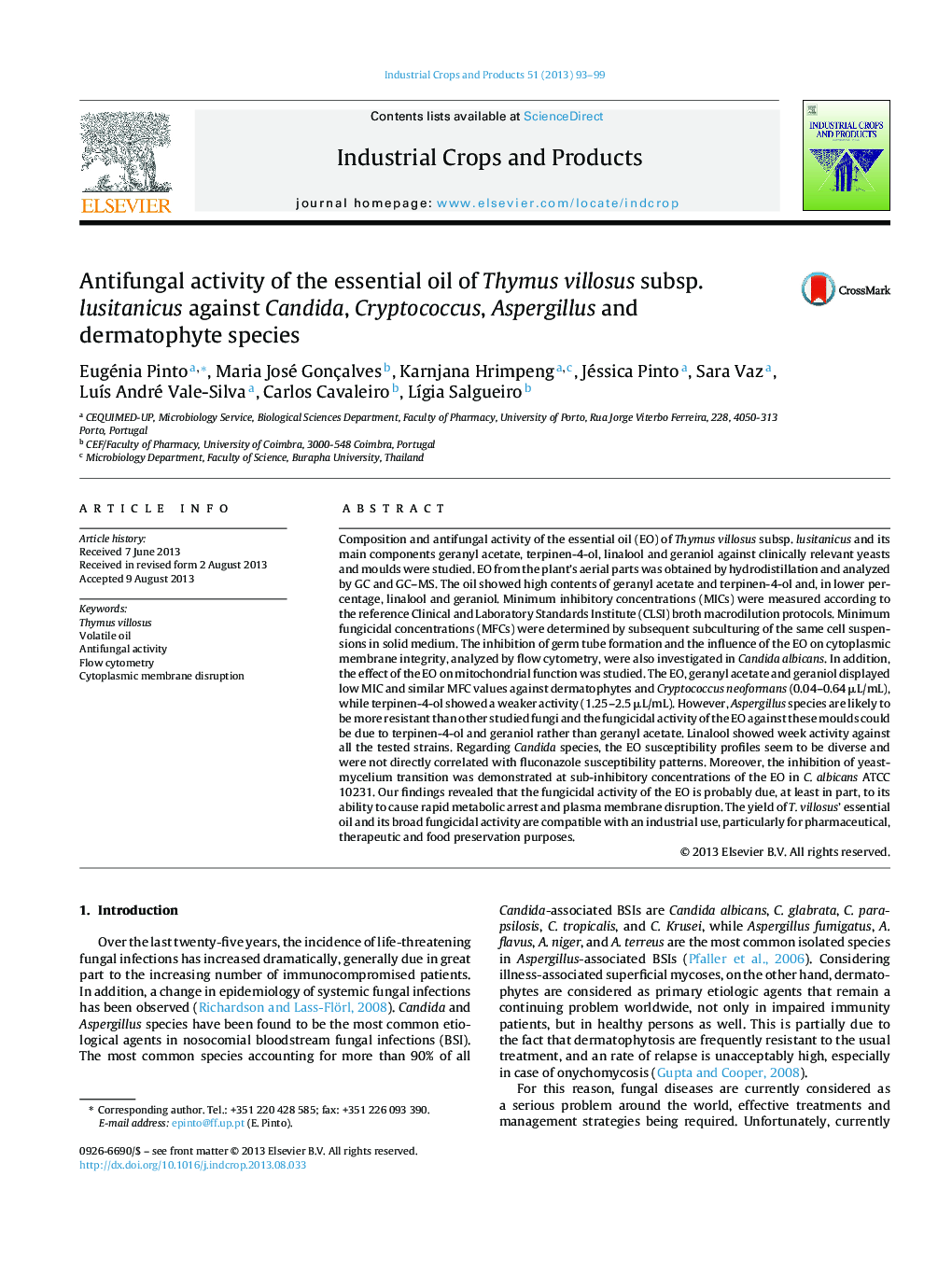| Article ID | Journal | Published Year | Pages | File Type |
|---|---|---|---|---|
| 6377119 | Industrial Crops and Products | 2013 | 7 Pages |
â¢Essential oil of Thymus villosus and its main components showed fungicidal activity.â¢Germ tube formation, mitochondrial activity and membrane integrity were affected.â¢Their association with commercial antifungal compounds could bring benefits.â¢Pharmaceutical, therapeutic and food industrial purposes should be considered.
Composition and antifungal activity of the essential oil (EO) of Thymus villosus subsp. lusitanicus and its main components geranyl acetate, terpinen-4-ol, linalool and geraniol against clinically relevant yeasts and moulds were studied. EO from the plant's aerial parts was obtained by hydrodistillation and analyzed by GC and GC-MS. The oil showed high contents of geranyl acetate and terpinen-4-ol and, in lower percentage, linalool and geraniol. Minimum inhibitory concentrations (MICs) were measured according to the reference Clinical and Laboratory Standards Institute (CLSI) broth macrodilution protocols. Minimum fungicidal concentrations (MFCs) were determined by subsequent subculturing of the same cell suspensions in solid medium. The inhibition of germ tube formation and the influence of the EO on cytoplasmic membrane integrity, analyzed by flow cytometry, were also investigated in Candida albicans. In addition, the effect of the EO on mitochondrial function was studied. The EO, geranyl acetate and geraniol displayed low MIC and similar MFC values against dermatophytes and Cryptococcus neoformans (0.04-0.64 μL/mL), while terpinen-4-ol showed a weaker activity (1.25-2.5 μL/mL). However, Aspergillus species are likely to be more resistant than other studied fungi and the fungicidal activity of the EO against these moulds could be due to terpinen-4-ol and geraniol rather than geranyl acetate. Linalool showed week activity against all the tested strains. Regarding Candida species, the EO susceptibility profiles seem to be diverse and were not directly correlated with fluconazole susceptibility patterns. Moreover, the inhibition of yeast-mycelium transition was demonstrated at sub-inhibitory concentrations of the EO in C. albicans ATCC 10231. Our findings revealed that the fungicidal activity of the EO is probably due, at least in part, to its ability to cause rapid metabolic arrest and plasma membrane disruption. The yield of T. villosus' essential oil and its broad fungicidal activity are compatible with an industrial use, particularly for pharmaceutical, therapeutic and food preservation purposes.
Graphical abstractDownload full-size image
